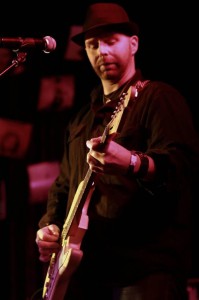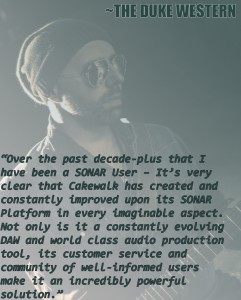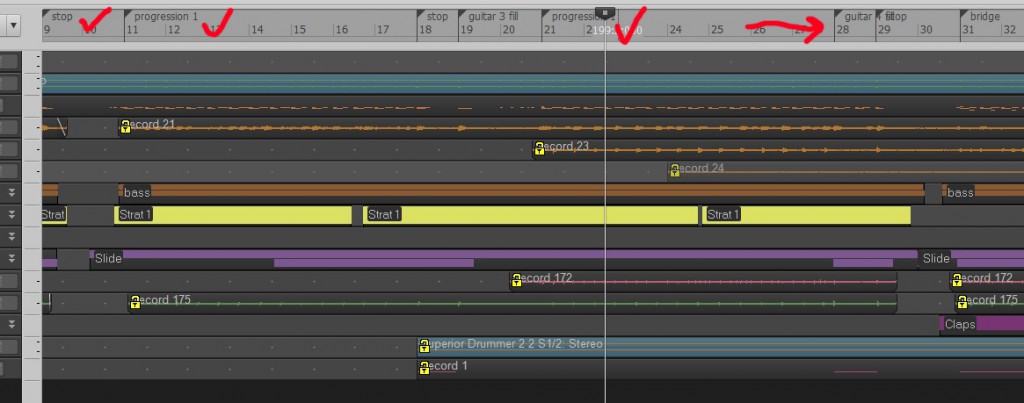 Here at Cakewalk we are fortunate to have an external team of rocket scientists who help test out SONAR beta releases. This team is dedicated, passionate and most of all appreciated by all of us internally here at the Cake shop. Recently I received a general email from one of my esteemed colleagues mentioning that one of our trustworthy beta soldiers was jumping off the beta-battlefield in lieu of another SONAR related activity. Huh? This peaked my curiosity and I felt obliged to dig a bit deeper on the subject. What could “another SONAR related activity” involve? SONAR Olympics? SONAR CPU Racing? SONAR Academy?
Here at Cakewalk we are fortunate to have an external team of rocket scientists who help test out SONAR beta releases. This team is dedicated, passionate and most of all appreciated by all of us internally here at the Cake shop. Recently I received a general email from one of my esteemed colleagues mentioning that one of our trustworthy beta soldiers was jumping off the beta-battlefield in lieu of another SONAR related activity. Huh? This peaked my curiosity and I felt obliged to dig a bit deeper on the subject. What could “another SONAR related activity” involve? SONAR Olympics? SONAR CPU Racing? SONAR Academy?
Featured Music Placements on Discovery Channel, History Channel, CBS, Bravo Network
As I dug deeper into the email thread I was intrigued and inspired by what I found—a long list of great music for TV including Duck Dynasty, Ink Masters, Intervention and a plethora of other very credible shows. Enter David Scott Rockower AKA The Duke Western: First of all, I don’t think one could have any more of a “Rock” name/surname than “David Scott Rockower,” so on that fact alone I had to reach out to this gent. Shortly into my first conversation with Mr. Rockower, I started having a déjà vu-type moment but then quickly relegalized it was a reverberation from my investigation on Mr. Bentley Ousley in the fact that I had uncovered yet another SONAR mastermind right under my nose.
 David is a well-schooled and road-tested musical warrior on all fronts. Starting with the basics, education, he achieved his Associates Degree in Music from Onondaga Community College in Syracuse New York. But like so many of us, his musical experiences in life are really what got him to where he is today—composing and recording custom cues on a daily basis in SONAR for some of the most popular shows on modern TV. A guitarist at heart, but a multi-instrumentalist by trade, David’s ability to successfully “nail” cues might just be mined from his past experiences of touring and performing with so many different styles of music. Or maybe it comes from his production experimentation at the ripe old age of 12 where he turned a Christmas present [Yamaha Keyboard] into 4 blistering tracks of MIDI arrangements (read interview below). Regardless of what it is, he has a fantastic story which is best told in his own words:
David is a well-schooled and road-tested musical warrior on all fronts. Starting with the basics, education, he achieved his Associates Degree in Music from Onondaga Community College in Syracuse New York. But like so many of us, his musical experiences in life are really what got him to where he is today—composing and recording custom cues on a daily basis in SONAR for some of the most popular shows on modern TV. A guitarist at heart, but a multi-instrumentalist by trade, David’s ability to successfully “nail” cues might just be mined from his past experiences of touring and performing with so many different styles of music. Or maybe it comes from his production experimentation at the ripe old age of 12 where he turned a Christmas present [Yamaha Keyboard] into 4 blistering tracks of MIDI arrangements (read interview below). Regardless of what it is, he has a fantastic story which is best told in his own words:
Cakewalk: What’s the typical technical process for writing these cues?
The Duke Western: It’s a little broader than I first thought it would be. I am usually sent musical examples, either tracks that are already in use, or a link to another artist with a sound they think is fitting for a scene, and from that point forward I am free to let my mind go. Occasionally I have been sent a rough video edit with ghost tracks that I am to replace. I once wrote 2 theme songs for a very well-known religious leader who was starting a talk show, and was sent the whole first episode along with an NDA. My tracks didn’t make the theme but were used in the show.
Cakewalk: What are some of the specific SONAR features that help you to compose the music for TV and Film?
 The Duke Western: “In my workflow these days I’ve really customized so many different playing fields inside of the SONAR Platform. The first and most obvious is the template saving feature. Track Colors and Icons have made the visual aspect of SONAR’s Console View much more navigable! At this point I have many different templates for individual instruments, and vocal palettes with their respective processing already in place—including effects sends. The new style dial features are cool as well – I use the “Grit” one quite often. The mix controls on the standard compressors in the ProChannel are a nice touch, so you can parallel process right inside the ProChannel itself. The QuadCurve EQ with its different vintage and hybrid curves is extremely useful and time-saving in terms of workflow. The fact that it uses minimal CPU is a bonus.”
The Duke Western: “In my workflow these days I’ve really customized so many different playing fields inside of the SONAR Platform. The first and most obvious is the template saving feature. Track Colors and Icons have made the visual aspect of SONAR’s Console View much more navigable! At this point I have many different templates for individual instruments, and vocal palettes with their respective processing already in place—including effects sends. The new style dial features are cool as well – I use the “Grit” one quite often. The mix controls on the standard compressors in the ProChannel are a nice touch, so you can parallel process right inside the ProChannel itself. The QuadCurve EQ with its different vintage and hybrid curves is extremely useful and time-saving in terms of workflow. The fact that it uses minimal CPU is a bonus.”
Cakewalk: Are there any not-so-known tricks you use at all in terms of features?
The Duke Western: “Nothing I haven’t stolen from the real geniuses in the sonar forums! How about recording the metronome to a track, then firing it side-chained into a gate so you can add rhythm to a static part – such as a synth pad?
Here’s a really helpful arrangement trick actually: I use the timeline for a few unorthodox things. In the past I would always populate the timeline after a musical idea had evolved, and use it to navigate the existing parts of a song. However, when you execute music cues, it’s common to get pretty particular time requirements, such as length, breaks, bridges etc – In many cases like this, once I select a tempo I will populate the TIMELINE with these things that need to happen at a particular point in time – before I play a single note. I’ll look at the timeline and THEN say “lets populate this with music.” …totally backwards workflow…right? I’ll use a left brain idea like this to help focus my right brain ideas.
Another way I use the timeline is when I export multiple mixes. My mixdown workflow consists of this: I’ll use waveform preview on my Master Buss, so I can determine the exact stop and start of a song, and then I’ll use the snap feature and go [1] 8th note in front of the piece, and [1] or [2] 8th notes outside of the last reverb tail, and then I’ll place an “In” and “Out” marker at these points. (I always start a song at measure [5] instead of zero – to stay out of trouble if I decide to change the intro). Then, with snap to grid on, I’ll select from these “In” and “Out” marker points to do my exports. This ensures that all of my final mixes are completely uniform as far as “length,” and “where the music comes in” – especially if I have to revisit the session to do a remix. By using this technique I know exactly where I originally exported from. It’s sort of like cropping in the photo world—this technique has allowed me to be much more consistent.”
Cakewalk: How do your sessions come together? Do you track everything and then mix or are you mixing as you go along?
The Duke Western: “For a long time I was a mix-as-u-go guy, but now that I work under a lot of deadlines, I really try to envision my mix as I choose instrumentations for the tracking, and I leave my hands on my guitar as much as possible during this time frame—I really want to stay as warmed up as possible. Especially during some of the more difficult projects such as the track “Texas Holdem” I did for Duck Dynasty, which I put together using the timeline techniques I listed above. I knew that I wanted to have 4 different lead guitars playing “catch me if you can” against each other: 1.) A poppy chicken picked Strat, 2.) A super clean notch position Strat, 3.) My US Masters Sportster (Humbucker Tele Style) with an open tuning playing slide, and 4.) Another Strat style guitar doing some pedal steel impersonations. I set up the timeline to reflect the skeleton of the idea, put down MIDI drums, played my rhythm and bass parts, then worked up all my leads with a metronome and recorded them. This was about 4 or more hours in just tracking – or “ditch digging” mode.
On this particular track I used all direct guitars – which I record using a dual Focusrite ISA setup – the clean direct guitar is rerecorded via an ISA 1. The signal is then routed out to (usually) my tech 21 Character Series Liverpool Pedal – and then back into my ISA Session Pack 220 for me to monitor. If I know I want to use a pedal, like my Keeley Compressor, or my 69 Fuzz, I’ll put that in front of everything and record that. I also have an isolation box in another room here with mics all wired up to my Dr. Z open-back 2×12 where I’ll record my JCM 800 or another amp which works wonderful for a good rock tone. It’s really hard to beat a great amp/cabinet/mic scenario. You really CAN hear the “clang” relationship of the strings into the speaker.
Writing and playing, vs mixing has a sort of Yin Yang relationship with me – they coexist, but don’t cross pollinate well. I’m easily absorbed into each of these worlds as I’m equally fascinated by their potential and outcome.”
Cakewalk: In your own words, how did you get going with composing and what got you to this level?
 The Duke Western: “At 12 years old, I got a Yamaha keyboard for Christmas that allowed me to record 4 different MIDI arrangement tracks. I soon covered Ozzy, Bon Jovi and Def Leppard as best I could using the auto arrangement features. Soon I figured out power chords and progressions. At one point, I figured that I couldn’t learn a new songs because I would erase the memory on the keyboard, so I figured out how to record it to a tape deck. By the time I was 13 I knew I wanted to figure this whole music thing out.
The Duke Western: “At 12 years old, I got a Yamaha keyboard for Christmas that allowed me to record 4 different MIDI arrangement tracks. I soon covered Ozzy, Bon Jovi and Def Leppard as best I could using the auto arrangement features. Soon I figured out power chords and progressions. At one point, I figured that I couldn’t learn a new songs because I would erase the memory on the keyboard, so I figured out how to record it to a tape deck. By the time I was 13 I knew I wanted to figure this whole music thing out.
When I was 15 years old I used a set of headphones as microphones and covered Heavens Trail by Tesla – I recorded myself on drums to a tape deck, then played it back and played guitar and recorded it on another tape deck – and I would bounce back and forth between the 2 overdubbing myself. I went through the 4 track era as well, however my first actual studio was in 1999 which was a 16 Track Reel to Reel with a giant Tascam mixer, and a few compressors I didn’t know how to use. A friend of mine who had a mac teamed up with me in 2000 and we had an early Pro Tools thing happening. Then in 2004 I set out to build a new DAW setup. I opted for SONAR 4 as I wanted to choose my own interface which Digidesign did not allow during that era, (which I think was a mistake on their part, as other hardware interfaces that outperformed theirs were much more accessible to users like me). My next step was SONAR 7, then SONAR X1 to the new SONAR Platinum. The upgrade to Platinum has really solidified my workflow and I’m a fan of the new Membership program, as I force myself to explore new features when they come out.
That’s the nuts-and-bolts of it; however, what got me here is my decision to stay faithful to the same left brain, and the fascination with the power of song that made me want to get in the game in the first place. I love songs, I love music, and I love the creative process to my very core. Every album I’ve ever bought, or every influence I can list, or every plug-in setting I’ve used, or even every practice routine I tab’d, out is merely a reflection of this core value.”
Cakewalk: What are you using for 3rd party plugs that you dig?
The Duke Western: “I love PSP – I think their Spring Reverb is monstrously useful and dead on. They also have a 2445 Plate Reverb that is really spectacular, and I use it on almost every mix in one form or another. I got into the Izotope thing awhile back and use Alloy, and Ozone a lot. There are new EQ improvements (Dynamic EQ – Baxandall Filters) and a few other things in Ozone 7 that are noticeable improvements in its use as a Master Buss Processor. Their Stutter Edit is great in the right context. I’m currently trying out the Sound Toys stuff and so far it’s cool. It’s definitely in the “creative” pool, as opposed to “corrective.” I bought the Rapture Pro soft synth and it’s wound up on quite a few TV programs as a result. The bass instruments are great, I use the different string patches all the time. The Garritan Pocket Orchestra (Dimension Pro) is my go to orchestral percussion source. If you listen to any of my Network TV stuff and you hear a gong, or crash cymbals – that’s Dimension Pro.”
Cakewalk: What are some of the shows that you’ve created music for fully in SONAR?
The Duke Western: “Here’s a short list of shows I’ve used SONAR to work on:
MTV’s Catfish
CBS Promo’s
Tyler Henry’s Celebrity Medium
Counting Cars
Alaskan Bush People
Impractical Jokers
Breaking Amish
Ink Masters
Intervention
Jep and Jess
House of DVF
Life in Pieces
Pacific Warriors
Say Yes to that Dress
Southern Charm
Duck Dynasty
PGA
2016 Olympics
NFL
UCF
Diesel Brothers
MTV’s Real World
Wahlburgers
Moonshiners”
As sad as we are to see David move on from Beta Testing, we are as equally excited for him on his success as a composer/producer. Obviously we all thank him for his help with Cakewalk, and we will be keeping a close ear and eye on him as fans of his whole mojo.
For more information on The Duke Western, Please visit:
http://www.thedukewestern.com/
https://www.facebook.com/TheDukeWestern/
To get started on creating your own musical cues, please visit the SONAR pages or TRY SONAR FOR FREE.
That’s all folks… thanks for reading, ~JL … \/




